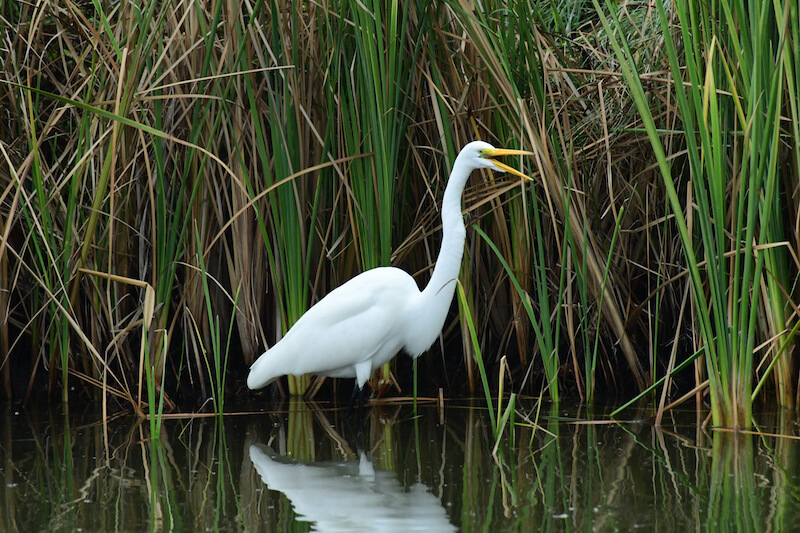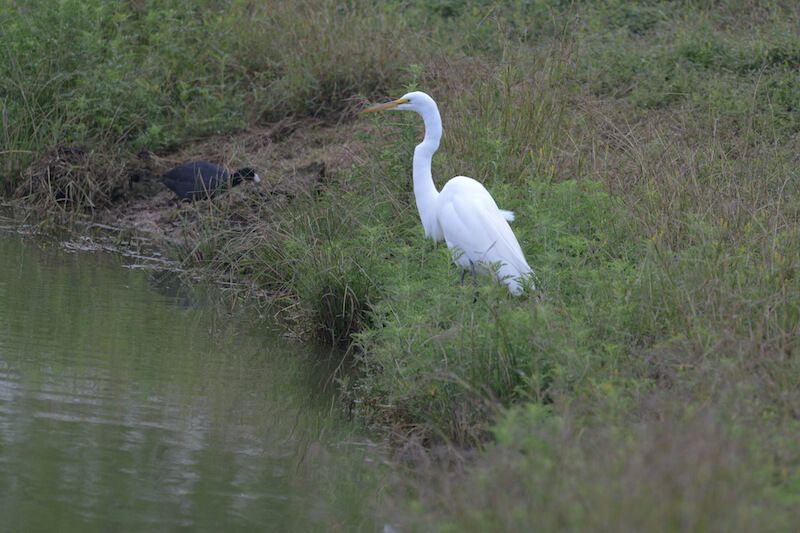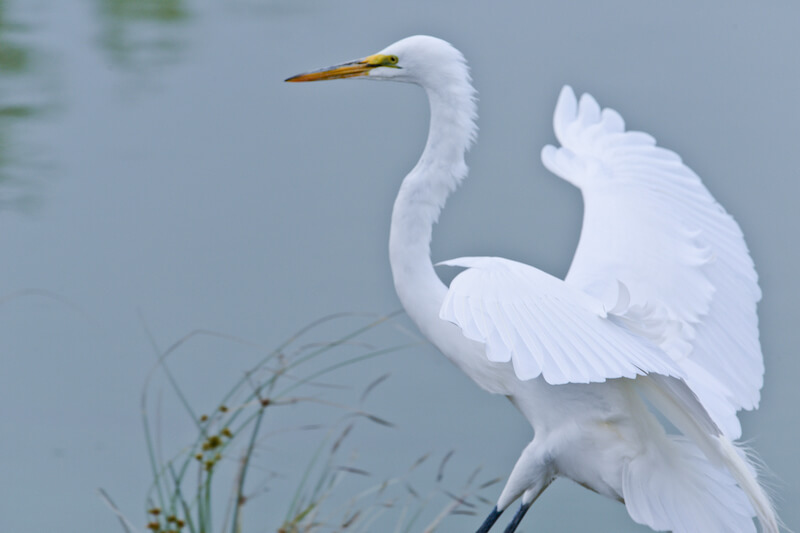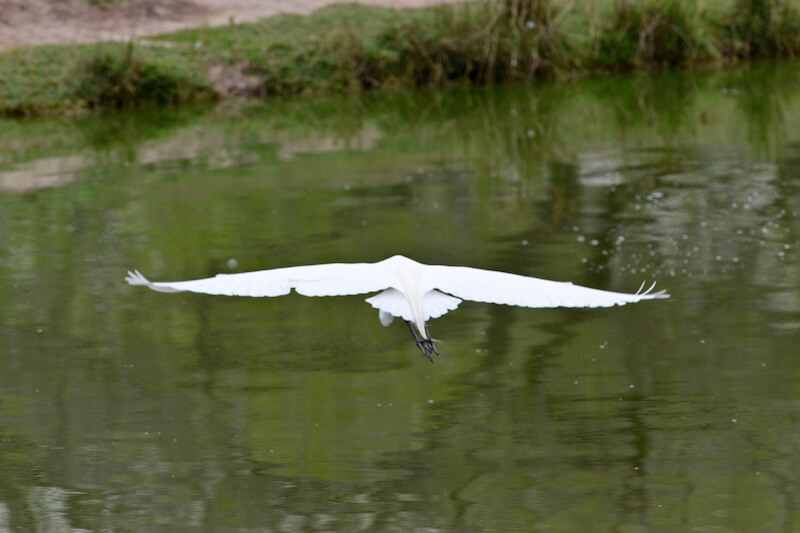Ardea alba
The Great Egret is an elegant large wading bird with entirely pure white plumage. It has a long yellow sharp yellow bill and long dark gray legs. At flight their neck is usually in an “S” shaped curve. with non-webbed feet with very long toes. Its length is less than 1 m (3ft) from bill to tail, 1 m height, a wingspan of 1.5 m (4.5 ft), and its weight is about 1 Kg (2.3 lb). No sexual dimorphism. They are found saltwater and freshwater marshes, wooded swamps and wetlands. It feeds alone in shallow water. It captures small fish, frogs, snakes, snails, crayfish, and other small crustaceans. It stands motionless and when it sees the prey, it pulls its head and neck back and quickly stabs at it. It stalks small mammals like moles and mice when on land. The great egret generally forages in the early morning and evening hours. At breeding time, adults have long delicate lacy plumes on its back that curl over their tails. The nests are built with other heron nests in a colony in wetlands and wooded swamps. Nests are a simple platform constructed of plant material built as high as possible. The clutch size is of 3-4 pale greenish blue eggs that are incubated by both parents for about 23 to 24 days. The young fledge 2-3 weeks after hatching. They raise one brood per year.
Es la garza blanca más grande y la más ampliamente distribuida. Es una ave de plumaje completamente blanco, con un largo pico Amarillo muy afilado. Su nuca es larga con forma de una S también visible al vuelo. Sus patas no son como las de los patos pero poseen dedos largos. Su longitud de pico a cola y su altura es de cerca de 1.0 m. La envergadura de sus alas es de 1.5 m y peso de 1 Kg. Tanto el macho como la hembra son parecidos. Viven en ambientes salobres y de agua dulce. Se encuentra en zonas de ciénegas, pantanos, y lagos con vegetación arbórea. Se alimenta cazando en aguas poco profundas. Permanece inmóvil al acecho y rápidamente mueve su cabeza y nuca para capturar la presa con su afilado pico. Atrapa peces, ranas, culebras, caracoles y otros crustáceos. En tierra, captura ratones y otros animales pequeños. Forrajea temprano en la mañana y antes del anochecer. En época de reproducción lucen plumas largas que salen de su lomo y llegan hasta la cola. Sus nidos son simples plataformas que construyen con material vegetal alto en árboles. Su postura es de 3 a 4 huevos de color verde-azuloso. Ambos padres incuban los huevos por un período de 23 a 24 días. Los polluelos dejan el nido entre las 2 y 3 semanas después de salir del cascarón. Hacen una postura por año.
LAM_1071
LAM_1504
LAM_1495
LAM_1562
LAM_1565
LAM_1567
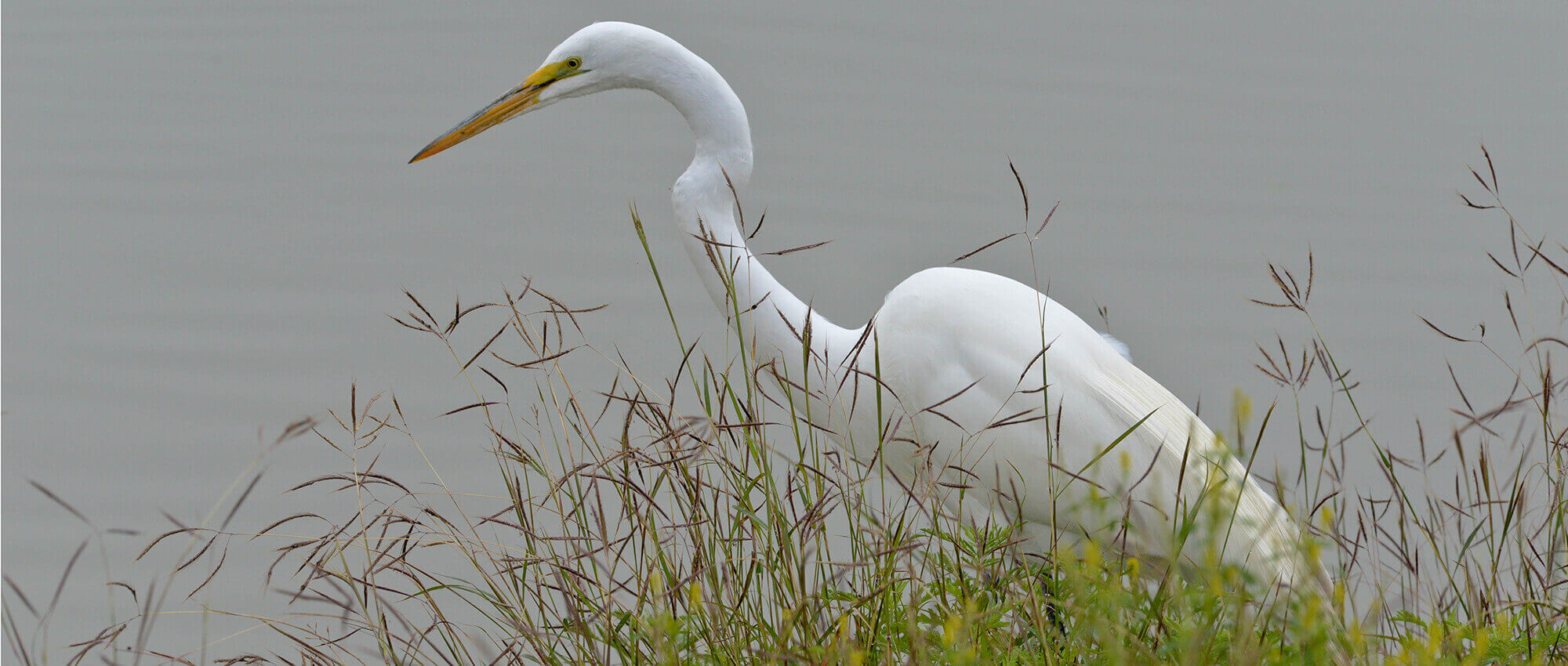
Great egretS ARE ELEGANT BIRDS WITH A PURE WHITE PLUMAGE
Garza real ES UNA GARZA ELEGANTE DE HERMOSO PLUMAJE BLANCO
